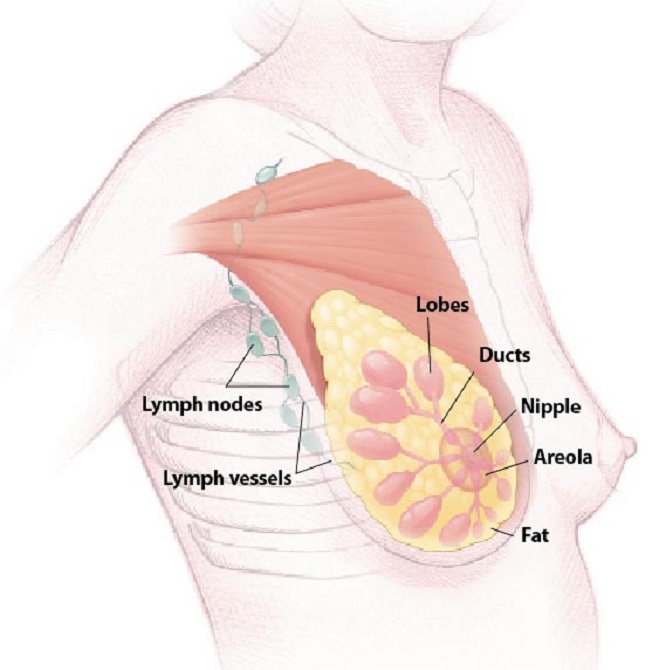The breasts consist of a series of ducts that transport milk from the mammary glands to the nipples while a woman breastfeeds. Blocked milk ducts is a medical condition that can be experienced by such mothers. This condition can cause intense pain, swelling, and itchiness.
Signs and Symptoms
The most common symptoms of a blocked milk duct include:
• Pain in a specific location in the breast,
• A swollen, tender lump in the breast,
• Heat and swelling in the breasts,
• Slower milk flow on one side, and
• Small white dot on the nipple known as a milk bleb.
Occasionally, a blocked duct can result in a low fever. As a fever can also occur due to a breast infection known as lactation mastitis, people who experience fever alongside breast pain should see a doctor.
Causes
Blocked milk ducts are quite common in women who nurse their infants, have recently given birth, and chose not to nurse, or have recently stopped nursing. They are more likely to happen to a breastfeeding woman who does not systematically drain the breast. Because this can allow milk to collect and block the duct.
Women experiencing other breastfeeding issues, such as excessive milk supply, a baby with a weak latch, or pain that obstructs recurrent nursing, are more exposed to this condition.
However, anyone who is breastfeeding can experience a blocked duct. Some risk factors include:
• Recent modification in feeding pattern,
• A poor latch by the baby,
• Not fully emptying the breasts during each nursing session,
• An irregular breastfeeding schedule,
• Short or skipped breastfeeding sessions, and
• Pressure on the breasts due to an uncomfortable nursing position, tightfitting clothes, or a bra with underwire.
Management of Blocked Ducts
• Feed more from the affected side first.
• Softly, stroke your breast towards the nipple during the feed. This may assist the let-down reflex.
• For comfort and to reduce swelling from surplus fluid, apply a cold cloth, or cool gel pack.
• Express after feeding.
• If you have a milk bleb, clean the nipple with a warm moist cloth. Thereafter, rub or scratch off the spot with a sterile needle to allow the duct to open and the milk to flow again.
• Use paracetamol or anti-inflammatory tablets according to directions until the lump clears.
• If the lump has not cleared after the next breastfeed, therapeutic ultrasound treatment (by a physiotherapist) of the affected breast may help clear blocked ducts.
• It is important the breast is well drained within 20 minutes of having the ultrasound treatment. This may be either by breastfeeding or expressing the breast.
• Pursue professional help if a blocked duct hasn’t cleared within 24 hours.
Prevention
• Guarantee correct positioning and attachment.
• Frequent drainage of the breast.
• Adjust your position during breastfeeds. Include underarm position, cradle position or lying on your side.
• Check for a white ‘spot’ on the nipple as this may be blocking the milk duct.
Avoid
• Abrupt elongated gaps between nursing sessions and expressing for your baby.
• Body-hugging or restrictive clothing such as a bra.
• Applying pressure on one area of the breast too tightly, especially close to the nipple.

